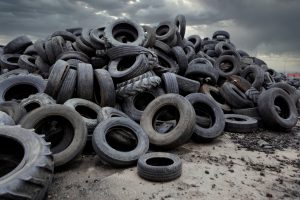In the ever-evolving landscape of waste management, skid-mounted pyrolysis plants have emerged as a groundbreaking solution. These compact and efficient systems are designed to transform various types of waste into valuable resources, contributing to both environmental sustainability and economic viability. This comprehensive post explores the key features, benefits, and applications of skid-mounted pyrolysis plant, shedding light on their role in revolutionizing waste processing.

I. Understanding Pyrolysis
To grasp the significance of skid-mounted pyrolysis plants, it’s essential to delve into the process of pyrolysis itself. Pyrolysis is a thermochemical decomposition of organic materials at elevated temperatures in the absence of oxygen. This process leads to the production of biochar, oil, and syngas, all of which can be utilized for various purposes. Skid-mounted pyrolysis plants leverage this transformative process to convert waste materials into valuable products.
II. The Skid-Mounted Advantage
Skid-mounted pyrolysis plants distinguish themselves by their compact and modular design. The term “skid-mounted” refers to the plant’s foundation, which is a robust steel frame that allows for easy transportation and installation. This modular approach significantly reduces setup time and costs, making these plants an attractive option for businesses and municipalities looking to implement efficient waste management solutions.
III. Key Components and Technology
A detailed exploration of the key components and technological aspects of skid-mounted pyrolysis plants is crucial for understanding their functionality. This section will cover the reactor, condensation system, gas cleaning unit, and control system. Additionally, it will delve into the latest technological advancements that enhance the efficiency and sustainability of these plants. If you wanna know pyrolysis plant cost estimate, Beston Group is your choice.
IV. Environmental and Economic Benefits
Skid-mounted pyrolysis plants offer a multitude of environmental and economic benefits. From reducing landfill waste and mitigating harmful emissions to producing valuable by-products, these plants contribute to a more sustainable and circular economy. This section will discuss the positive impact of skid-mounted pyrolysis plants on both the environment and the bottom line of businesses.

V. Applications Across Industries
The versatility of skid-mounted pyrolysis plants extends to various industries. From municipal solid waste management to agriculture and industrial applications, these plants can be tailored to meet the specific needs of different sectors. This section will explore the diverse applications and highlight real-world examples of successful implementations.
VI. Overcoming Challenges and Considerations
While skid-mounted pyrolysis plants offer numerous advantages, it’s essential to acknowledge and address potential challenges. Factors such as feedstock variability, regulatory compliance, and operational maintenance should be carefully considered. This section explores how industry stakeholders can navigate these challenges to ensure the seamless integration and sustained success of skid-mounted pyrolysis plants in diverse settings.
VII. Case Studies and Success Stories
To underscore the practical impact of skid-mounted pyrolysis plants, this section will delve into specific case studies and success stories. Highlighting instances where these plants have been successfully deployed across different regions and industries will provide valuable insights into their real-world applications. From waste-to-energy projects to resource recovery initiatives, these examples showcase the versatility and effectiveness of skid-mounted pyrolysis plants.
VIII. Future Trends and Innovations
The field of waste management is dynamic, with continuous advancements in technology and sustainability practices. This section explores emerging trends and innovations in skid-mounted pyrolysis plants, such as integration with artificial intelligence for process optimization, enhanced feedstock compatibility, and developments in catalytic pyrolysis. Anticipating future trends is crucial for staying at the forefront of sustainable waste management practices.
IX. Global Impact and Regulatory Framework
Skid-mounted pyrolysis plants have the potential to make a significant global impact on waste reduction and resource recovery. This section examines the current global landscape of waste management and explores how these plants can play a crucial role in meeting sustainability targets. Additionally, it delves into the regulatory frameworks that influence the adoption and operation of skid-mounted pyrolysis plants worldwide.
X. Collaboration and Industry Partnerships
Achieving widespread adoption of skid-mounted pyrolysis plants requires collaboration between industry players, government bodies, and environmental organizations. This section emphasizes the importance of fostering partnerships to drive innovation, share best practices, and overcome common challenges. Collaborative efforts can accelerate the integration of these plants into mainstream waste management practices.
Conclusion
Waste tyre recycling pyrolysis plant stands as a testament to the transformative power of innovation in waste management. Their modular design, efficiency, and versatility offer a blueprint for a sustainable future. As technology continues to evolve and global awareness of environmental issues grows, skid-mounted pyrolysis plants are poised to play a pivotal role in reshaping how we approach waste management on a global scale. Through continued research, collaboration, and implementation, these plants have the potential to redefine our relationship with waste and pave the way for a more sustainable and circular economy.